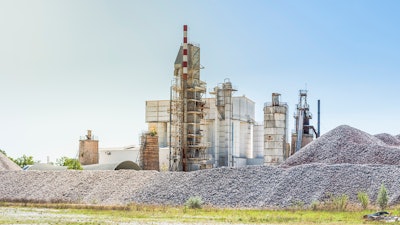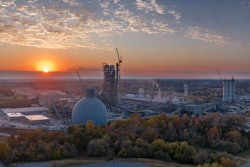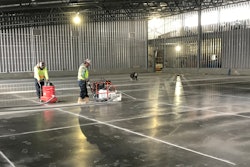
A year after the Portland Cement Association released its Roadmap to Carbon Neutrality, both the PCA and World Cement Association came forward with positive remarks about the progress. However, plenty of work can still be done today that can make a positive impact on both profits as well as emissions.
The 5th (WCA) Annual Conference took place between September 25-28 in Dubai, UAE, allowing industry leaders and stakeholders to have an open discussion and honest assessment of the biggest challenges that the cement industry faces. The World Cement Association is the original international cement association and represents the cement industry and its stakeholders. This year’s theme focused on reducing the carbon footprint and cost but many concluded that the greatest limiting factor to decarbonizing the industry is not technology, but the sector’s drive to act now.
“There are actions that all cement companies can take today to reduce emissions and cut costs at the same time, it’s win-win for both climate and company,” says WCA CEO Ian Riley. “The conference attendees welcomed the roadmap and I believe it will have prompted management teams to rethink their approach and the urgency of the challenge."
“There is plenty that can be done today with a big positive impact on the bottom line and on emissions,” says Amr Nader, A³&Co. ’s Co-Founder and CEO. A supporter and partner of the conference, A³&Co. explained that the Middle East and North Africa (MENA) region have the potential to reduce CO2 emissions by 47% - by way of operational excellence, product portfolio optimization, using alternative fuels and calcined clear or belite cement.
"I'm proud that our industry is taking this on," said Mike Ireland, President and CEO of PCA. "Together we've made progress on a bold yet achievable pathway to carbon neutrality. We are creating a win-win scenario to meet demand for durable infrastructure that also has a low carbon footprint, which will result in a more sustainable and resilient world for the next generation."
Economic incentives are a major factor. According to McKinsey, about 6.9 kg of CO2 is emitted per dollar—the most of the major construction sectors (that's five times more than steel). They encourage government-based incentives such as carbon pricing and green procurement for public projects to encourage change.
Despite the global acknowledgment of the need for immediate action and financial incentives, some notable progress includes:
- Cement Production. With an average CO2 footprint of 486 kg per tonne of cement, India's Dalmia Cement (Bharat) Ltd. achieved the lowest emissions of any major cement company worldwide, according to Mahendra Singhi, the company CEO. “Our efforts have helped us achieve one of the lowest carbon footprints across the global cement industry, as well as being one of the most profitable cement companies in India,” says Singhi.
- Carbon Capture. Multiple cement manufacturers in the U.S., with support from the Department of Energy, have begun pilot projects around emerging technologies that capture carbon before it is emitted and reusing it for another purpose or storing it (a.k.a. carbon capture, utilization, and storage (CCUS).
- PLC Accpetance. Increased acceptance and use of portland limestone cement (PLC), a product that reduces the carbon footprint of concrete by about 10%. PLC has been approved by 44 state departments of transportation, some of the largest consumers of cement.
- Demand. Growing consumer demand for sustainable concrete, with companies specifying low-carbon materials for major construction projects as part of their own sustainability goals.
"Through this Roadmap, we are creating a built environment that is durable and also sustainable," says Ron Henley, President, GCC of America and Chairman of PCA. "We are demonstrating that the cement and concrete industry can address climate change, reduce greenhouse gases, and eliminate barriers that are restricting environmental progress."
The industry is pushing innovation and calling on stakeholders for more collaboration. As legislators and regulators have a role to play in the Roadmap, PCA is working with Congress and federal agencies to maximize the benefits of the Infrastructure Investment and Jobs Act and the Inflation Reduction Act, both of which provide significant funding for the clean technologies the cement industry requires to reduce emissions.
PCA is also advocating for the modernization of existing legislation—such as the Resource Conservation and Recovery Act – to accelerate cement and concrete's path to carbon neutrality, and ensure concrete made with cement remains the sustainable building material of choice.
"Everything we do is thanks to concrete—all of our schools, roads, airports and hospitals have their foundations in concrete," says Filiberto Ruiz, President and CEO, Votorantim Cimentos North America and Vice Chairman of PCA. "If consumers demand low-carbon cement and concrete, we can accelerate research and production."
PCA's comprehensive approach will allow for the industry to continue aligning with private partners, government, industry and technology leaders on solutions, regulations and policy changes, empowering the industry and others to realize this shared societal mission.
The PCA Roadmap to Carbon Neutrality can be downloaded and viewed for free.



















